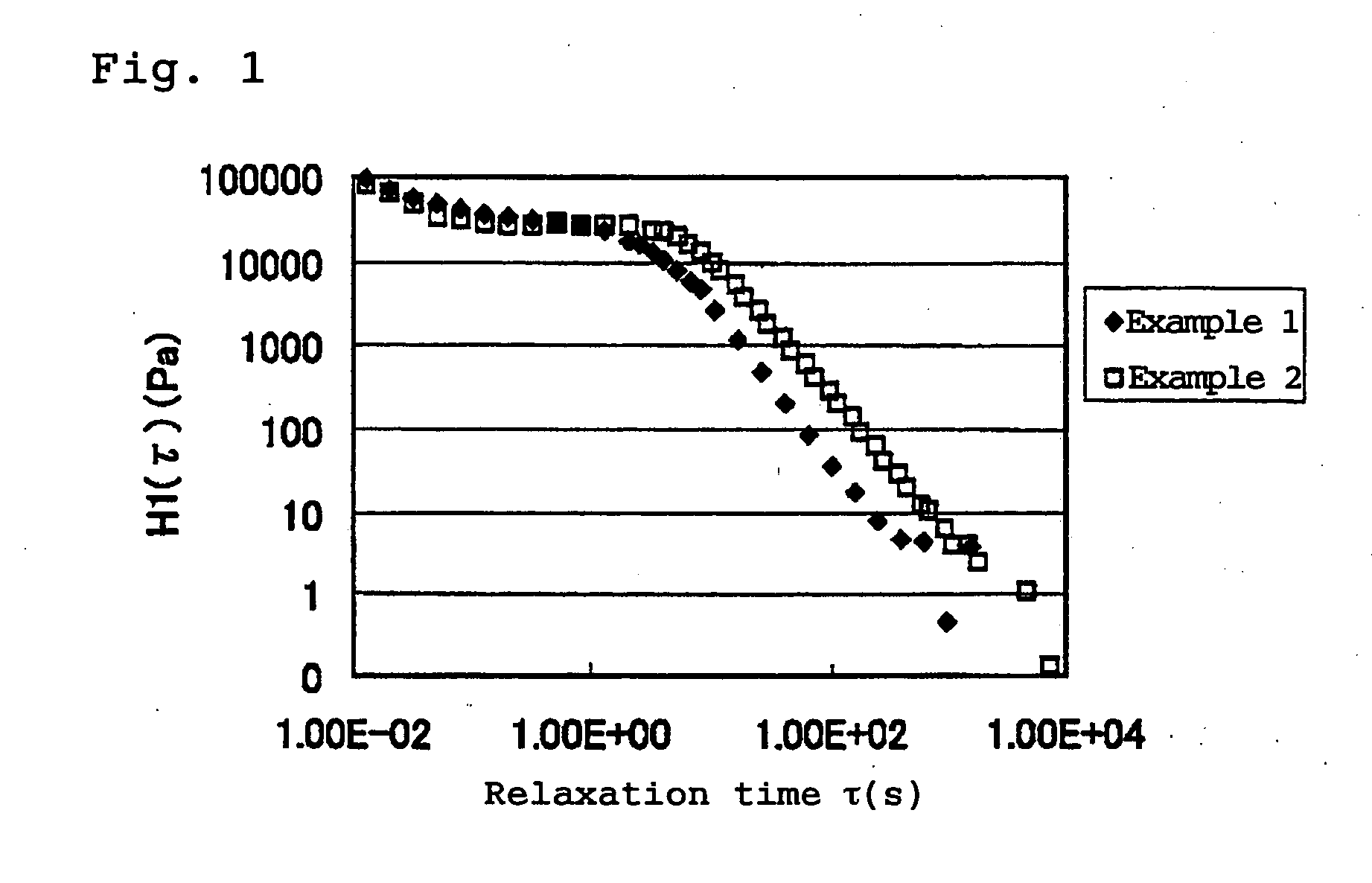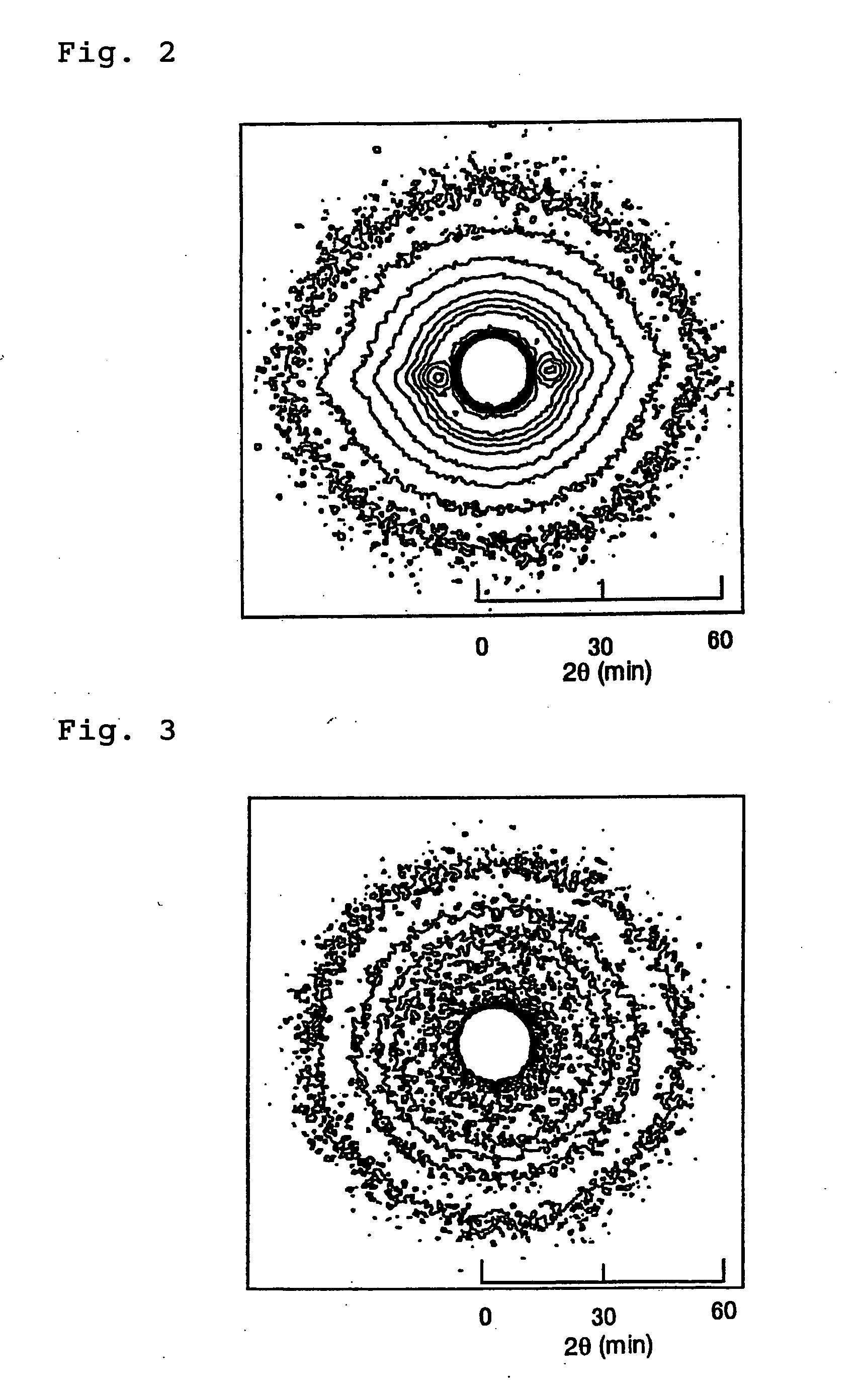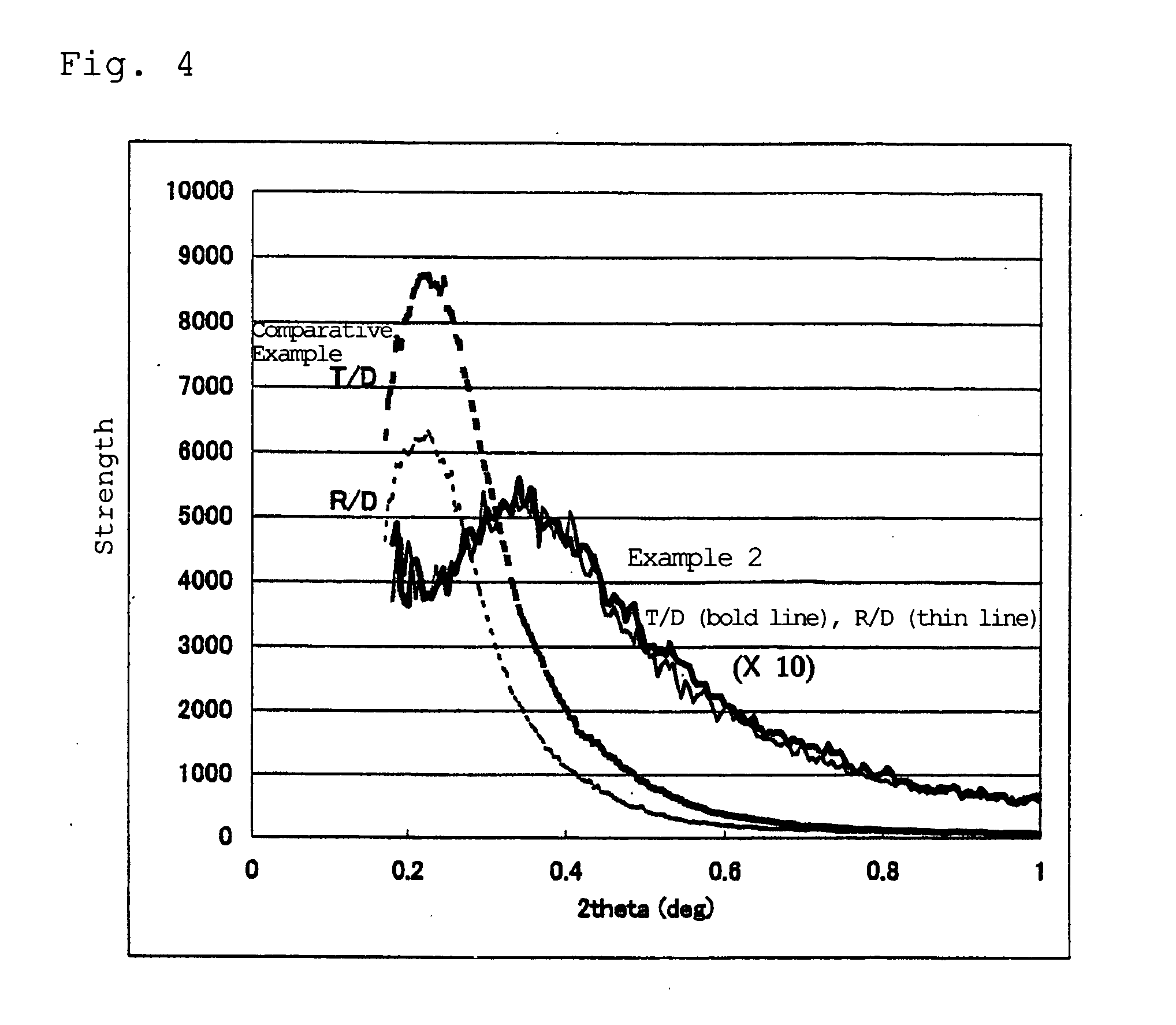Hydrogenated styrene polymer resin composition and optical elements
a technology of styrene polymer and resin composition, which is applied in the field of hydrogenated styrene polymer resin composition and optical elements, can solve the problems of poor heat resistance and low heat resistance of polymethyl methacrylate, and the inability to achieve satisfactory heat resistance and mechanical properties, and achieve excellent shape stability, excellent transparency, and low water absorption
- Summary
- Abstract
- Description
- Claims
- Application Information
AI Technical Summary
Benefits of technology
Problems solved by technology
Method used
Image
Examples
production example 1
First Hydrogenated, Polymerized Styrene
250 g of styrene, 3.8 g of isoprene and 1,286 g of cyclohexane were dried and charged into a metal autoclave equipped with a stirrer which had been fully dried and substituted with nitrogen. After the resulting solution was heated at 40° C., 4.9 ml of a 1.6 M solution of n-butyl lithium-cyclohexane was added to carry out a reaction for 1.5 hours. Subsequently, a dried solution consisting of 250 g of styrene, 3.8 g of isoprene and 1,286 g of cyclohexane was added to carry out a reaction for 1.5 hours, and then a dried solution consisting of 250 g of styrene, 3.8 g of isoprene and 1,286 g of cyclohexane was added to further carry out the reaction for 1.5 hours. After the end of the reaction, 1.6 g of 2-propanol was added to stabilize the terminal of a polymer in order to obtain a styrene-isoprene copolymer. The copolymer had a number average molecular weight obtained from GPC of 112,000 and a weight average molecular weight of 123,000. The wei...
production example 2
Second Hydrogenated, Polymerized Styrene
After a dried solution consisting of 375 g of styrene and 1,830 g of cyclohexane was charged into a metal autoclave equipped with a stirrer which had been fully dried and substituted with nitrogen and heated at 40° C., 7.9 ml of a 1.6 M solution of n-butyl lithium-cyclohexane was added to carry out a reaction for 1.5 hours. Subsequently, a solution consisting of 112 g of isoprene and 500 g of cyclohexane which had been dried with a molecular sieve 4A was added to carry out a reaction for 1.5 hours, and then a dried solution consisting of 375 g of styrene and 1,830 g of cyclohexane was added to further carry out the reaction for 1.5 hours. After the end of the reaction, 1.6 g of 2-propanol was added to deactivate the terminal of a polymer in order to obtain a styrene-isoprene-styrene block copolymer. The copolymer had a number average molecular weight obtained from GPC of 68,000 and a weight average molecular weight of 79,000. The weight rat...
example 1
The solution 1 and the solution 2 were mixed together in a copolymer ratio of 1:1, the Sumilizer GS (of Sumitomo Chemical Co., Ltd.) was added in an amount of 0.5 part by weight based on 100 parts by weight of the copolymer, and the solution was heated to 260° C. and depressurized to 1 mmHg gradually to remove cyclohexane. The obtained resin composition had a glass transition temperature of 138° C. The relaxation spectrum at 200° C. of the resin composition is shown in FIG. 1. The relaxation time τ (s) when the relaxation spectrum H1 (τ) became 10 (Pa) and Izod impact strength of the obtained resin composition are shown in Table 1.
PUM
| Property | Measurement | Unit |
|---|---|---|
| thickness | aaaaa | aaaaa |
| thickness | aaaaa | aaaaa |
| temperature | aaaaa | aaaaa |
Abstract
Description
Claims
Application Information
 Login to View More
Login to View More - R&D
- Intellectual Property
- Life Sciences
- Materials
- Tech Scout
- Unparalleled Data Quality
- Higher Quality Content
- 60% Fewer Hallucinations
Browse by: Latest US Patents, China's latest patents, Technical Efficacy Thesaurus, Application Domain, Technology Topic, Popular Technical Reports.
© 2025 PatSnap. All rights reserved.Legal|Privacy policy|Modern Slavery Act Transparency Statement|Sitemap|About US| Contact US: help@patsnap.com



